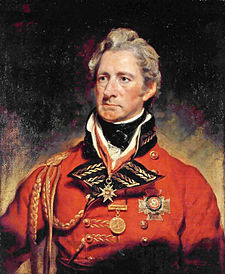 |
| Munro pillar, Dharmapuri. Tamilnadu Tourism - blogger |
 |
| Inscription. Sir Thomas Munro Pillar, Dharmapuri. Tamilnadu Tourism - blogger |
 |
| Gov. of Madras. Sir Thomas Munro. en.wikipedia.org/ |
was a true Scottish officer who made a mark as a remarkable administrator and his contribution in the area of administration and revenue assessments is still worthy of emulation. These great souls shone like beautiful stars in the firmament in the midst of treacherous, lousy British officers who openly practised corruption and racial discrimination, thus committing injustice and misusing their power.
Sir Thomas Munro Pillar in Dharmapuri town, Tamil Nadu is a famous landmark that links the present generation with the past colonial legacy. This pillar was constructed by the government of Madras ( then Madras Presidency) to mark the association of Dharmapuri with Sir Thomas Munro who lived here from April 1792 to March 1799 as Assistant to the Superintendent of Revenue in the Baramahal. Now this pillar is in honor of his dedicated services to the Indian natives. His house and his favourite garden where few yards away from this place.
Major-general Sir Thomas Munro, (27 May 1761 - 6 July 1827), a Scottish soldier and colonial administrator was in the service of East India Company Army officer and statesman.
Educated at the University of Glasgow, he was man of affable and generous disposition, besides being courageous and honest. Endowed with robust physique, he entered the services of EIC in 1779 as an infantry cadet in Madras and fought in the battles against Haidar Ali (1780-1783) and in the first campaign against Tipu Sultan (1790-1792). He spent the next seven years as one among the four military officers to administer the Baramahal, the part of territories annexed from Tipu. Here he gained a good knowledge of some important aspects of administration among which the principles of revenue survey and assessment found wide application in the management of revenue. When he became the Governor of Madras in 1819, he founded the system of revenue assessment and administration which is still being followed in S. India. His principles became a bench mark throughout the presidency of Madras then. Earlier, he was instrumental in introducing the Ryotwari system of land revenue in 1807 in parts of lands now called Telengana state, S. India. In 1814, he reformed the judicial and police system in the Madras presidency.
 |
| Sir Thomas Munro statue, Madras. en.wikipedia.org/ |
He died on 6 July 1827 (aged 65), Pattikonda, Madras Presidency, British India (now: Pattikonda, Kurnool district, Andhra Pradesh)
Ref:
http://tamilnadu-favtourism.blogspot.in/2015/11/sir-thomas-munro-pillar-dharmapuri.html
https://en.wikipedia.org/wiki/Sir_Thomas_Munro,_1st_Baronet








.webp)
